Week-long classes at the Folk School provide a great opportunity to learn a new skill or hone an existing one. They also afford sufficient time to get to know your instructor and your fellow students. In my experience, all the Folk School instructors have been great; they are knowledgeable experts who care about helping their students learn. But some instructors stand out from the crowd‒Harley Refsal is a case in point. Harley is the kind of instructor students come back to study with again and again. He’s a highly regarded, talented woodcarver. But what makes him special is his manner and approach‒he teaches with patience, attentiveness and caring.
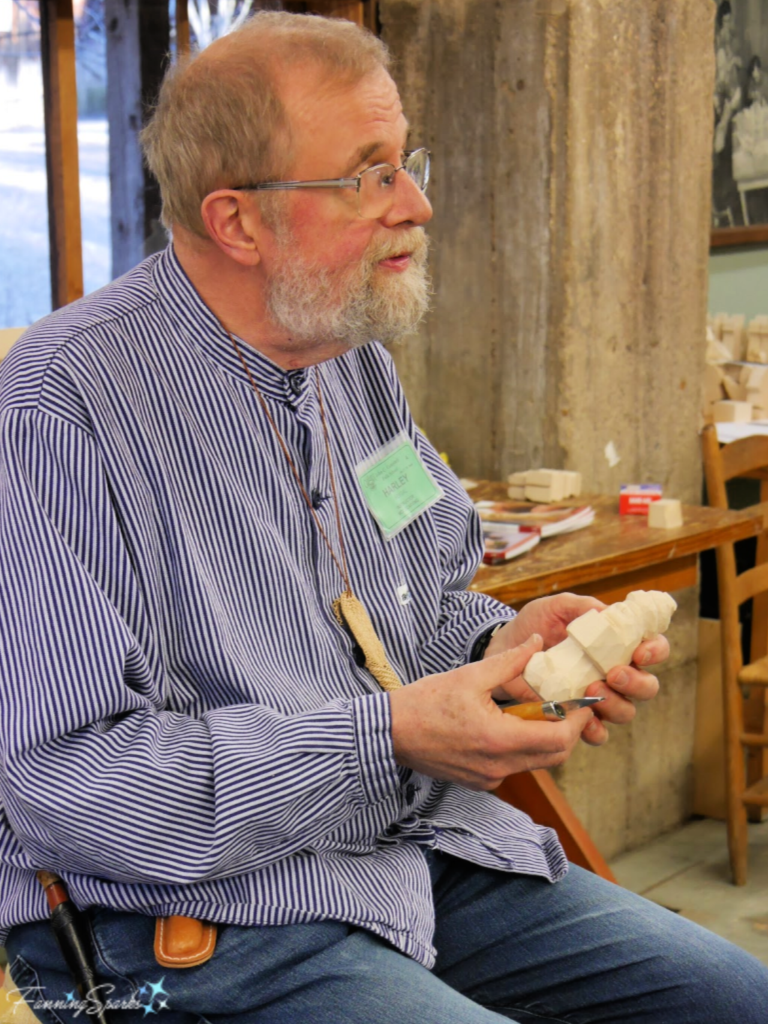
My class was fortunate to have a second instructor, Frank Boyd, who is also a talented woodcarver and shares Harley’s easy-going, caring manner. The mutual respect and admiration between Harley and Frank was obvious throughout the week. Add in Frank’s crazy sense of humor, a great group of students, the rich heritage of the Folk School Carving Studio, and you have the perfect recipe for an unforgettable week.
Harley specializes in flat-plane figure carving which is a style of woodcarving with Scandinavian roots. Flat-plane carving is a minimalist style, with strong, simple cuts that leave the tool marks exposed. It’s all about bold, flat facets designed to catch the light and cast shadows. I heard Harley state several times that he aims to make as few cuts as possible using only his carving knife. That is not a simple matter. I know from my own, limited beginner experience, that it’s easier to control multiple small, safe cuts. So flat-plane carving may look simple but it’s not. Harley calls it “the difficult art of simplification”.
The Folk School course description for Scandinavian-style Figure Carving promises “No experience required-if you can peel potatoes, you can do this!”. Yet it’s still surprising when Harley starts off the class by teaching how to carve a carrot! Note Harley always wears a carving glove; he only removed it for this demo so we could see his hands more clearly.
 After carving the simple carrot form, we drilled a small hole at the top of the carrot with a hand drill. Here’s my carrot (bottom left) about to be drilled.
After carving the simple carrot form, we drilled a small hole at the top of the carrot with a hand drill. Here’s my carrot (bottom left) about to be drilled.
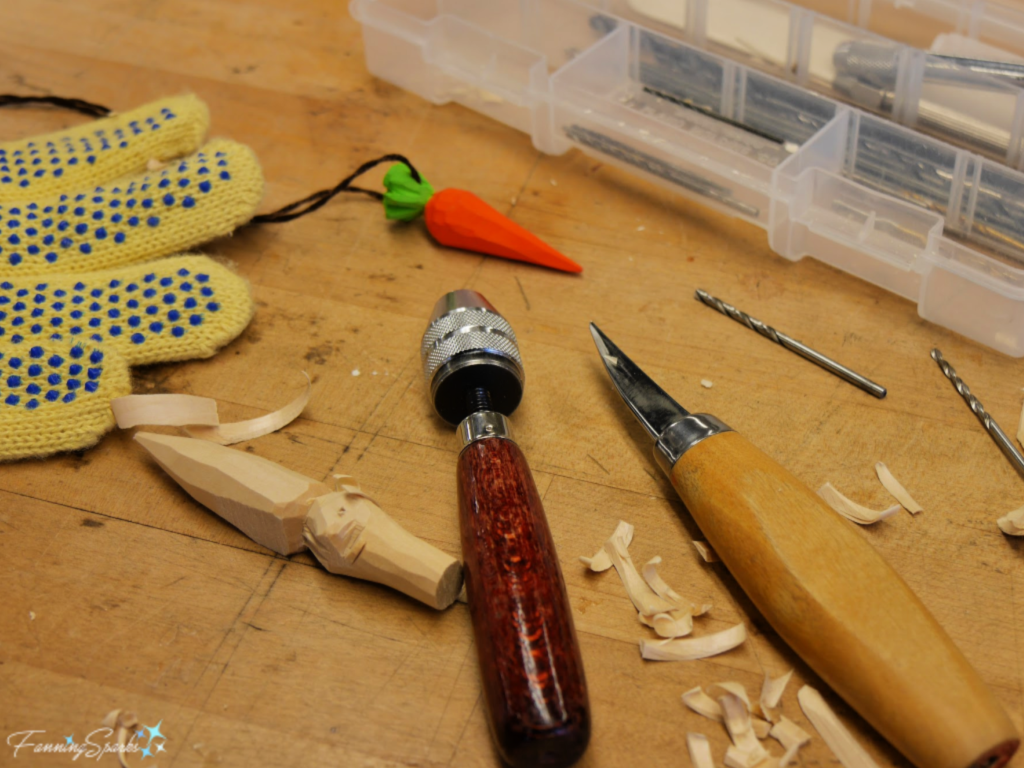 The class progressed from carrots to fish. Harley uses a fish figure to introduce the topic of wood grain and how to adjust your cutting technique according to the direction of the grain. He uses a simple phrase “Always ski downhill” as a reminder to push the knife in the same direction as the wood grain. Here is a finished fish, often referred to as the “go by”, in front of my fish carving blank.
The class progressed from carrots to fish. Harley uses a fish figure to introduce the topic of wood grain and how to adjust your cutting technique according to the direction of the grain. He uses a simple phrase “Always ski downhill” as a reminder to push the knife in the same direction as the wood grain. Here is a finished fish, often referred to as the “go by”, in front of my fish carving blank.
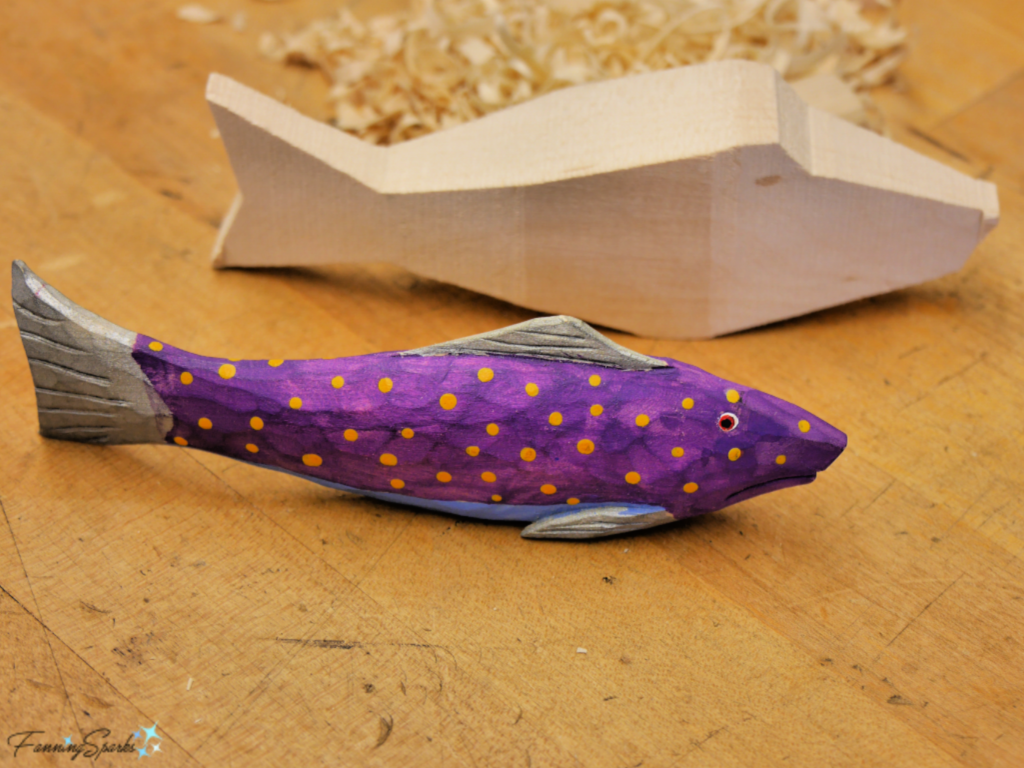 Harley brought a variety of figures and carving blanks to give the students lots of options.
Harley brought a variety of figures and carving blanks to give the students lots of options.
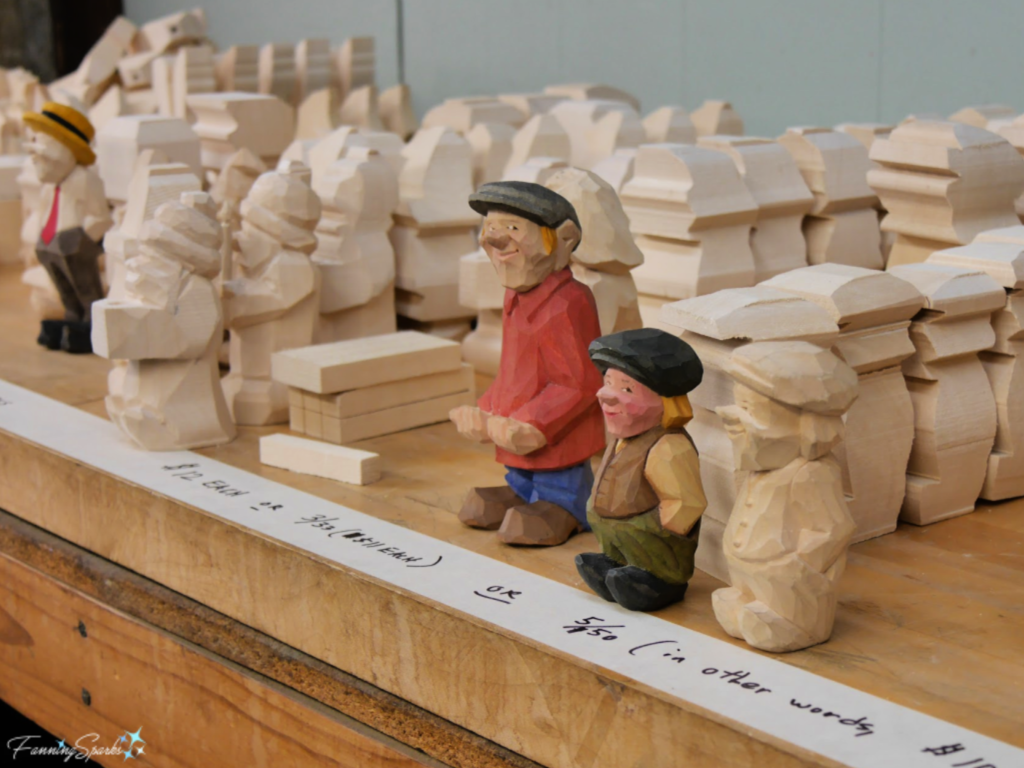 The tomte, a figure inspired by the work of painter/illustrator Jenny Nyström (1854-1946) creator of the Swedish image of the Jultomte, is one of Harley’s favorites.
The tomte, a figure inspired by the work of painter/illustrator Jenny Nyström (1854-1946) creator of the Swedish image of the Jultomte, is one of Harley’s favorites.
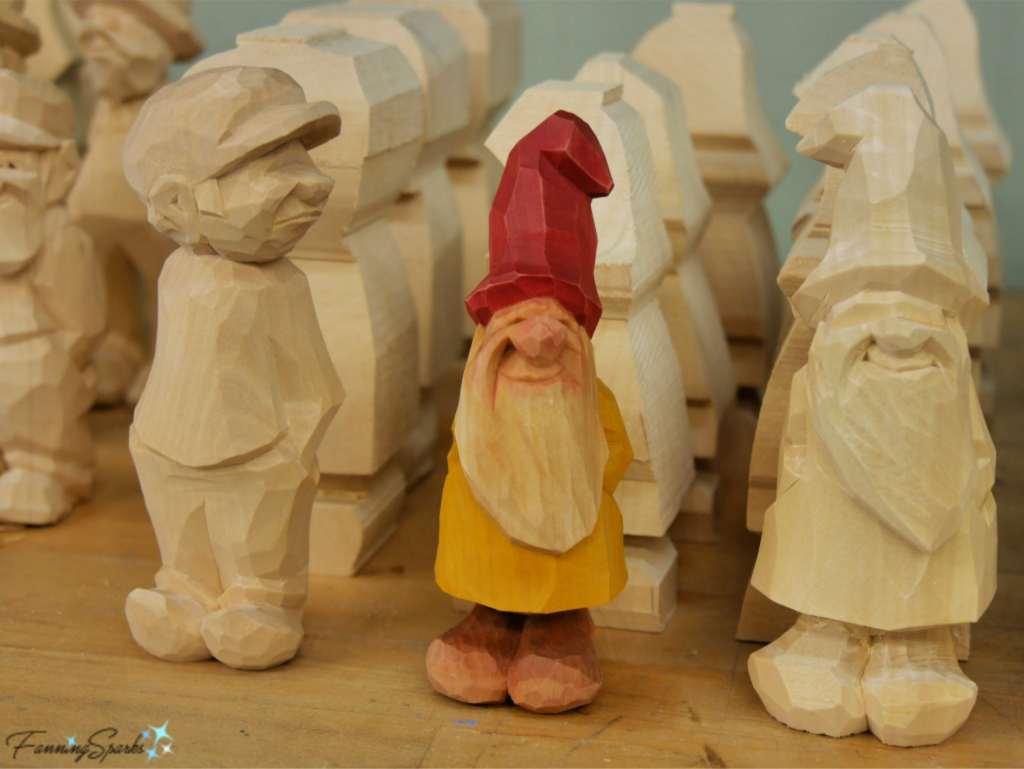 Harley emphasized the importance of a sharp knife and demonstrated knife sharpening techniques. Here he is using a series of credit card-sized Dia-sharp sharpeners from DMT (Diamond Machine Technology).
Harley emphasized the importance of a sharp knife and demonstrated knife sharpening techniques. Here he is using a series of credit card-sized Dia-sharp sharpeners from DMT (Diamond Machine Technology).
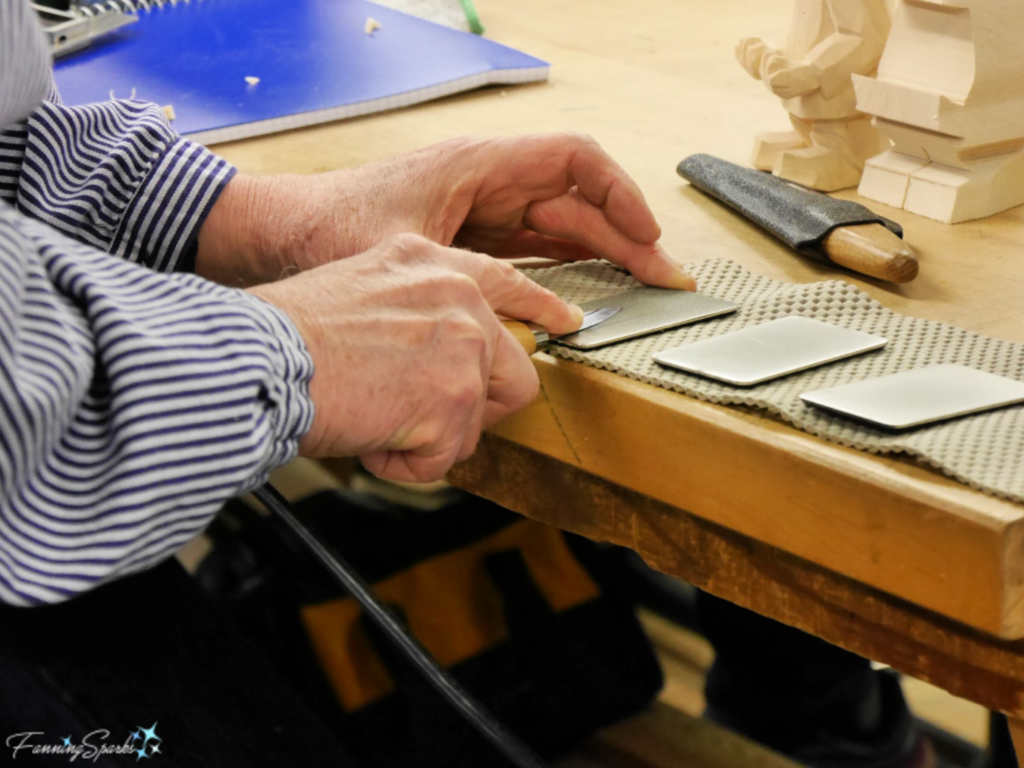 I decided to tackle a horse figure next. Here’s the go by with my carving blank.
I decided to tackle a horse figure next. Here’s the go by with my carving blank.
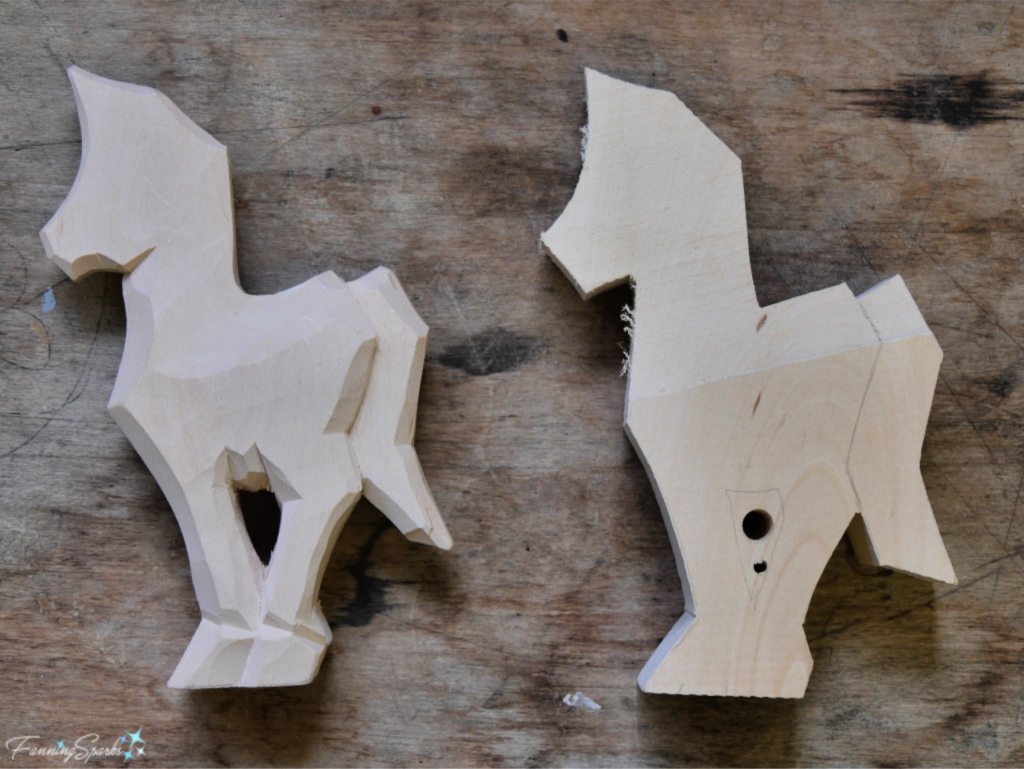 This horse figure lends itself to the flat-plane style. I was pleased with my progress.
This horse figure lends itself to the flat-plane style. I was pleased with my progress.
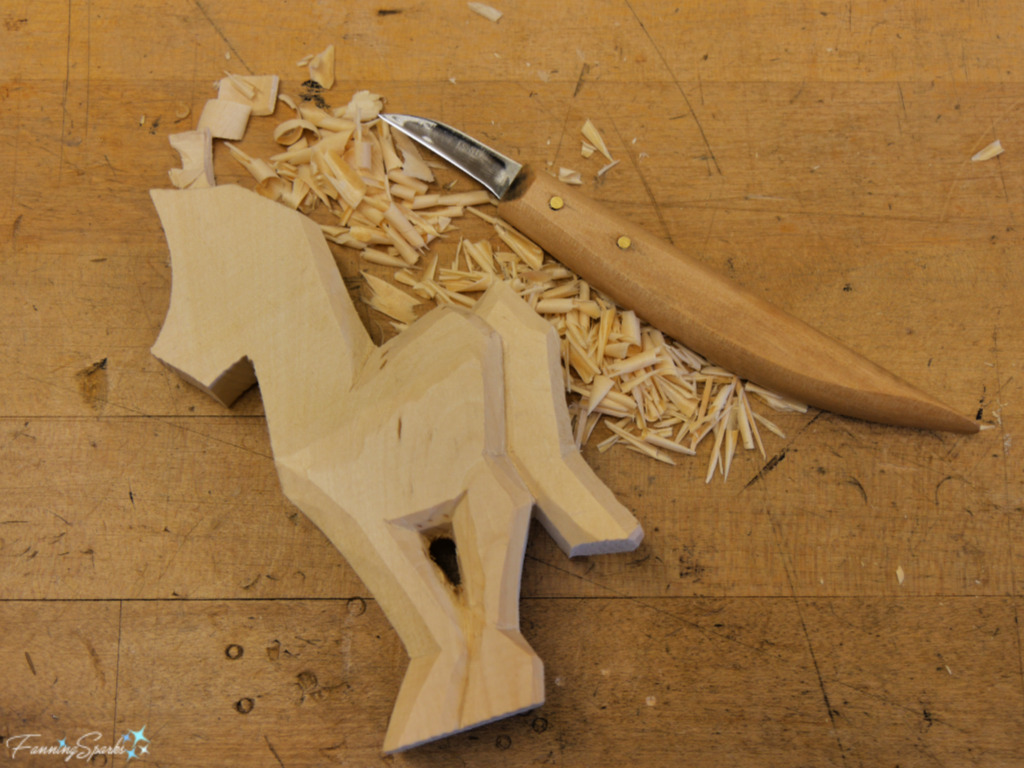 Then for my biggest carving challenge to date, I decided to take on a figure of a man designed to hold a sign. This is the go by model carved by Harley.
Then for my biggest carving challenge to date, I decided to take on a figure of a man designed to hold a sign. This is the go by model carved by Harley.
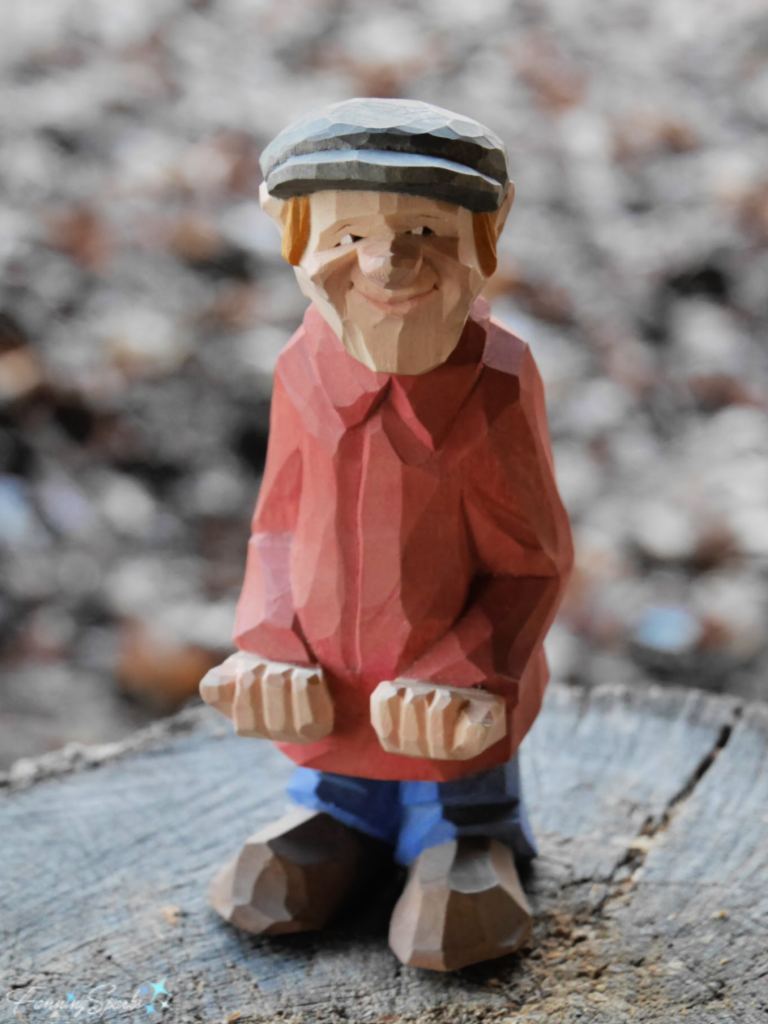 Here’s my carving blank with the first section carved out around his left shoe.
Here’s my carving blank with the first section carved out around his left shoe.
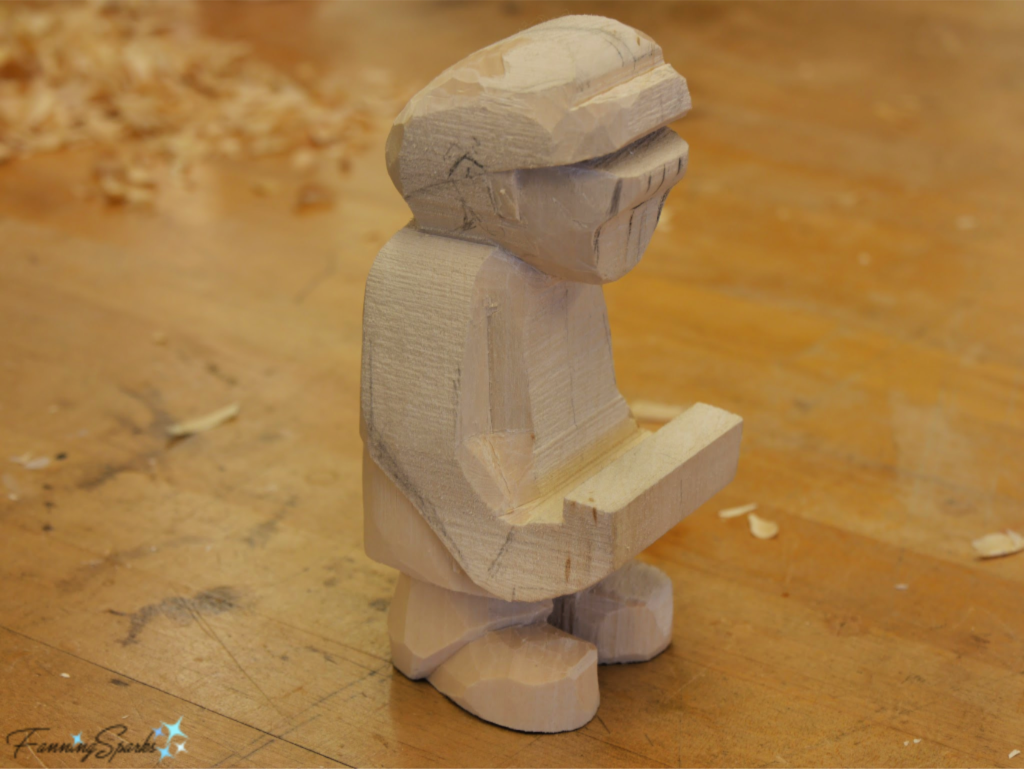 I worked on this figure for several days with lots of assistance from Harley and Frank. In the below photo, I’m about to tackle the face. One lesson I learned is the importance of marking your cuts. A pencil is indeed a critical tool for woodcarving.
I worked on this figure for several days with lots of assistance from Harley and Frank. In the below photo, I’m about to tackle the face. One lesson I learned is the importance of marking your cuts. A pencil is indeed a critical tool for woodcarving.
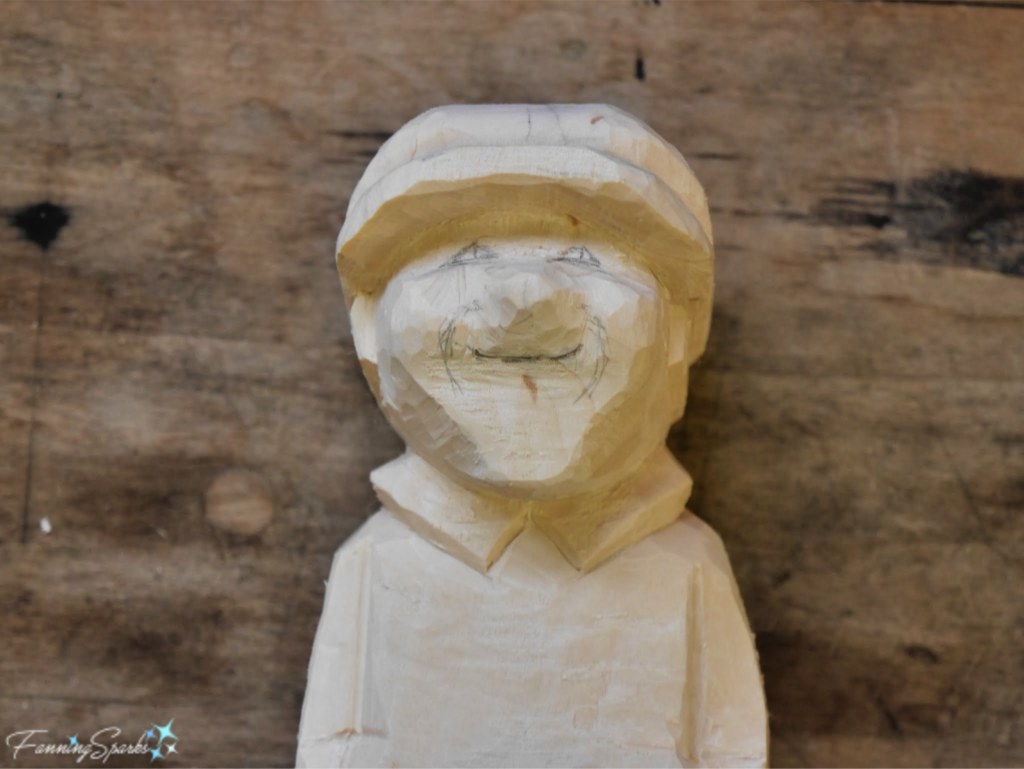 Although I decided to leave my figure natural, we learned how to paint and finish our pieces. Harley thins water-based acrylics to paint his carvings.
Although I decided to leave my figure natural, we learned how to paint and finish our pieces. Harley thins water-based acrylics to paint his carvings.
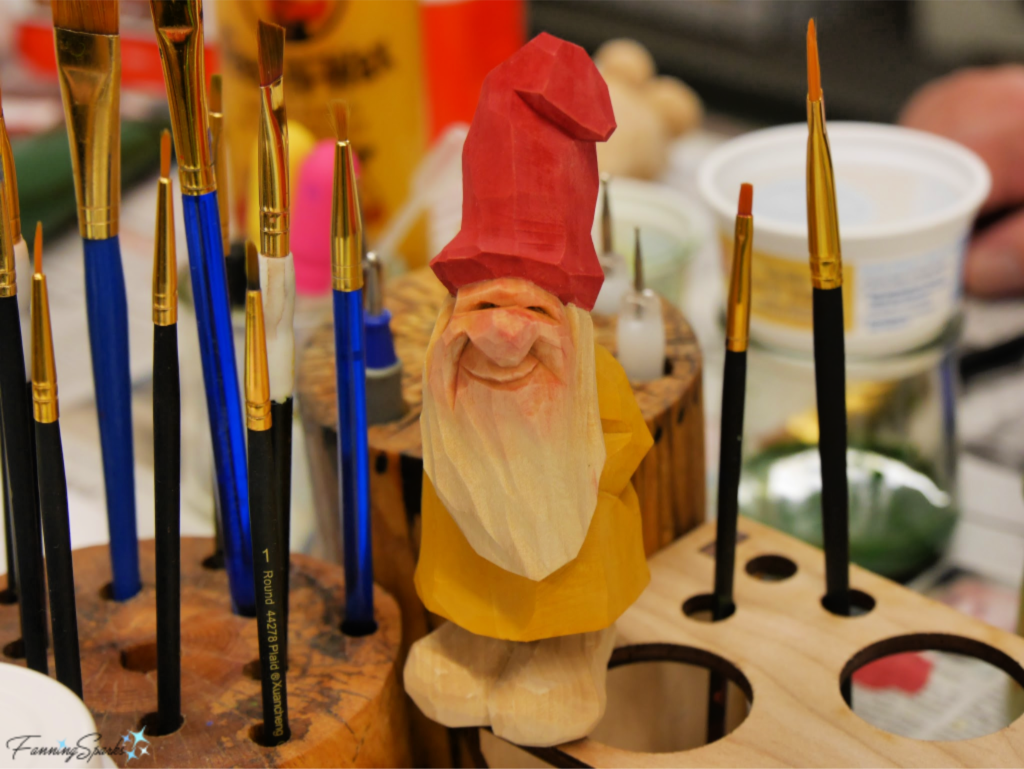 Then he finishes them with a matte finish wax such as Watco Satin Wax.
Then he finishes them with a matte finish wax such as Watco Satin Wax.
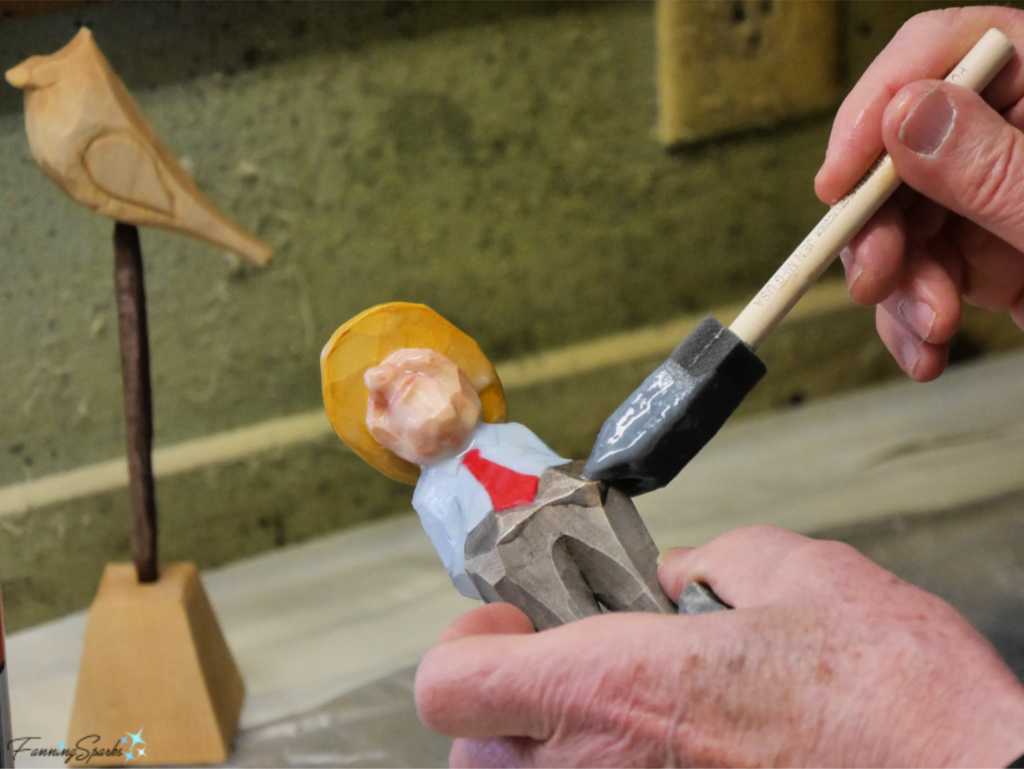 I chose the sign holder figure because it’s functional. But as I looked for the perfect spot to place it in my home, I realized it’s so much more than just a sign holder-it’s a delightful reminder of the joy of creating and wonderful days spent carving with Harley, Frank and my new carving friends.
I chose the sign holder figure because it’s functional. But as I looked for the perfect spot to place it in my home, I realized it’s so much more than just a sign holder-it’s a delightful reminder of the joy of creating and wonderful days spent carving with Harley, Frank and my new carving friends.
More Info
You can see Harley Refsal in action in this Craft in America video: Wood carver Harley Refsal & John C. Campbell Folk School from the December 2013 holiday episode.
Harley has authored several books, which are available online, including:
. Whittling Little Folk
. Carving Flat-Plane Style Caricatures
. Scandinavian Figure Carving: From the Viking Era to Doderhultarn, Trygg and Modern Carvers.
In addition to teaching at the John C Campbell Folk School, Harley teaches at the North House Folk School in Minnesota and the Vesterheim Folk Art School in Iowa.
I participated in the Work Study Program at the John C Campbell Folk School. You can learn more about the program in my post First Impressions as a Work Study Student. Or check out the following posts to learn about the Folk School experience.
. Weave a Market Basket
. Artistic Details Around Campus
. Carving in Brasstown
. Getting Started with Woodcarving
. Work Study Program FAQ
. From Sheep to Shawl.
You can learn more on the John C Campbell Folk School website, their Facebook page or Instagram account. Information about the Work Study program is found here.
Today’s Takeaways
1. Consider trying a “high touch, low tech” activity such as woodcarving to offset today’s technology driven world.
2. Explore different styles within a chosen craft or medium.
3. When you find an instructor you admire, support his/her efforts by spreading the word, purchasing their pieces, attending their classes, and so on.


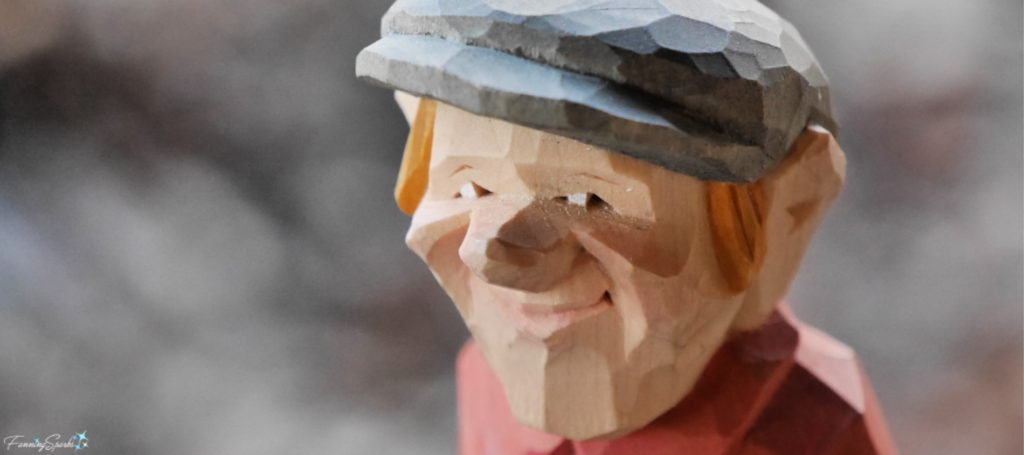


Comments are closed.